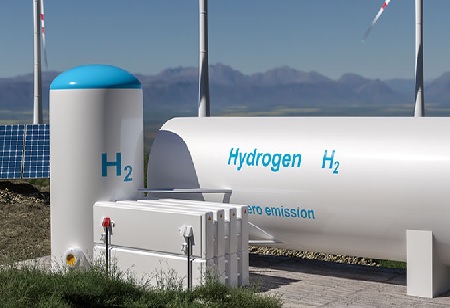The government is expected to allocate around ₹6,000 crore each for production-linked incentive (PLI) schemes for electrolyzers and green hydrogen from the ₹20,000 crore green hydrogen mission, said two people aware of the developments. The ministry of new and renewable energy has moved a cabinet note detailing green hydrogen consumption obligations, subsidies and standards for the pilots, and research and development requirements under the mission.
“The green hydrogen mission is of ₹20,000 crore, and the bulk of the amount is for PLIs for electrolyzers and hydrogen. It would be ₹5,000-6,000 crore, each, for both the incentive schemes," said one of the two people requesting anonymity. A second official said the initiative includes major enabling provisions for developing the green hydrogen industry and adoption in India. Queries to the new and renewable energy ministry, finance ministry and the Department for Promotion of Industry and Internal Trade did not elicit any response till press time.
A favourable policy to encourage the manufacturing of electrolyzers is crucial for India to bring down the cost of green hydrogen. Union minister for new and renewable energy R.K. Singh has spoken about the Centre’s plans to develop an incentive scheme to boost electrolyzer manufacturing. Recently, he revealed plans for a
PLI scheme for green hydrogen, too. He said support would be offered for the initial projects. “We will have a PLI for electrolyzers and a PLI for manufacturing green hydrogen. But the PLI for manufacturing green hydrogen will only be required for the initial capacities, maybe 4 million-5 million tonnes. After that, the green hydrogen (industry) will stand on its own feet,“ he had said at an event last week.
The comprehensive green hydrogen mission was launched after the government unveiled the green hydrogen policy in February, with a promise to offer cheaper renewable power, fee waivers for inter-state power transmission for 25 years for projects commissioned before June 2025, land in renewable energy parks, and mega manufacturing zones to help local industries lower the use of fossil fuels.
The policy seeks to promote green hydrogen and green ammonia, besides facilitating storage of green power, to help green power producers to save surplus power with electricity distribution companies for up to 30 days. It also envisages building bunkers near ports to store and export green ammonia.
After the National Green Hydrogen Mission was announced by Prime Minister Narendra Modi in August 2021, India has seen a serious push on both the policy and industry front. Billionaires Mukesh Ambani and Gautam Adani have announced mega plans to make India a green hydrogen hub, and state-run Indian Oil Corp Ltd, earlier this year, agreed to partner with clean energy producer ReNew Power and Larsen and Toubro to produce green hydrogen.
Several private companies have also announced their forays into green hydrogen. In September, global steelmaker POSCO signed a memorandum of understanding with renewable energy firm Greenko ZeroC to make green hydrogen and pursue opportunities in renewables and other derivatives of green hydrogen.
Green hydrogen is generated by breaking down water in an electrolyzer. The hydrogen can then be combined with nitrogen to make ammonia, avoiding hydrocarbons in the process. Green ammonia is used to store energy and in fertilizer manufacturing. India has set a target of 5 million tonnes of green hydrogen by 2030. Over the next decade, the Centre plans to add 175 GW of green hydrogen-based energy.
